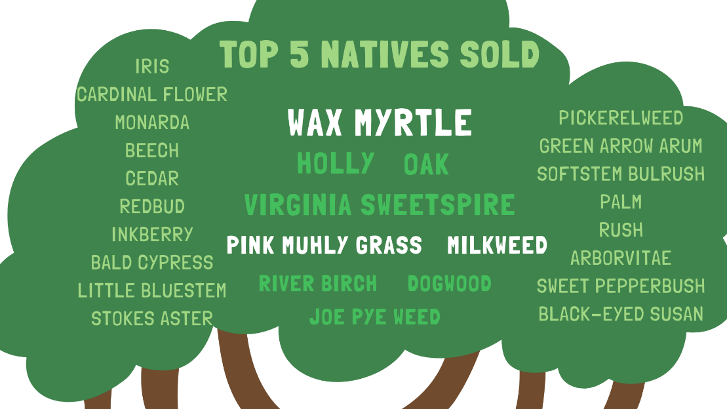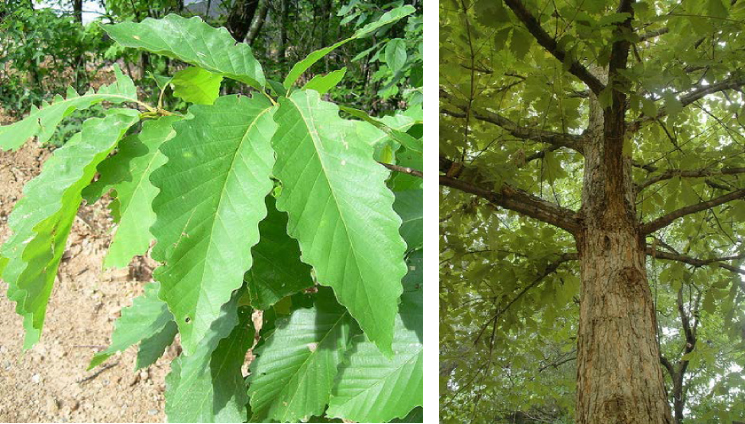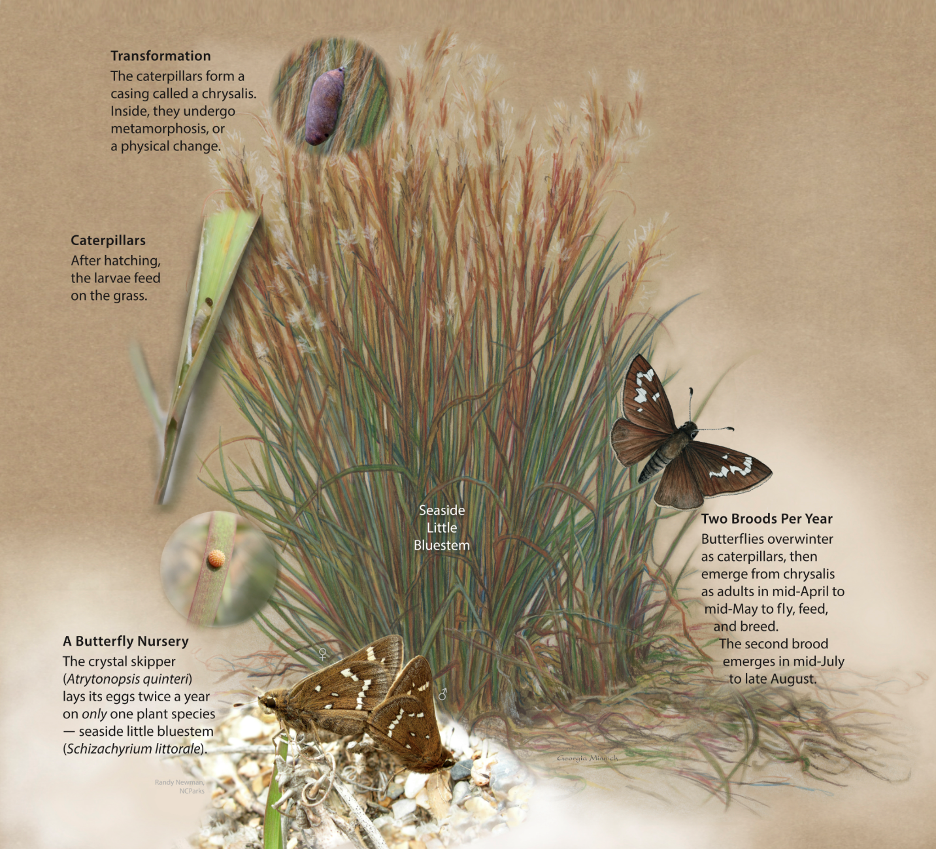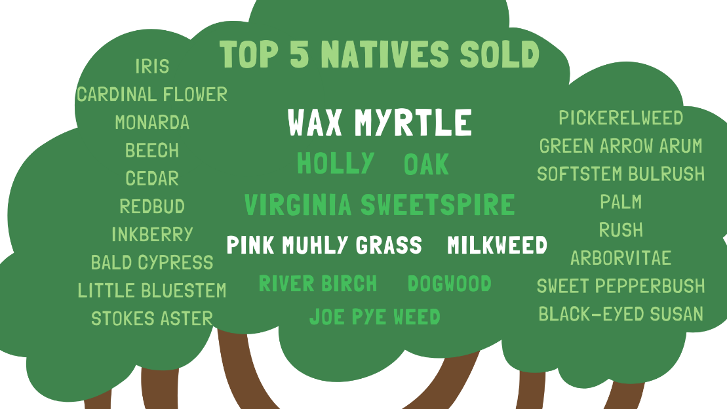By Jane Harrison, Coastal Economics Specialist, North Carolina Sea Grant
Demand for native plants has increased in the last five years as more customers ask for them and for nature-enhancing landscapes. But is the industry poised to help them? What plants are available to propagate and sell; what plants work well; and what considerations should be given to native plant design, installation and maintenance in North Carolina’s coastal areas?
These issues were discussed during the presentation “Demand for Native Plants is on the Rise, Can Supply Catch Up?” Topics included common native plants grown and which natives could be added to those already being grown by the state’s nursery industry. Another issue was how to communicate with clients who want to use native plants in their landscapes. The speaker recommended education on how to maintain native plant landscapes for municipalities and large scale developers.
The speaker was Dr. Jane Harrison, a coastal economics specialist with North Carolina Sea Grant, who also distributed new educational material to the audience.
Findings were based on a 2021 survey of North Carolina plant nurseries. They were presented at last winter’s Green & Growin’ education conference of the NC Nursery & Landscape Association (NC-NLA) in Greensboro.
The survey was sponsored by The Coastal Landscapes Initiative (CLI), a collaborative effort coordinated by North Carolina Sea Grant to increase nature-enhancing landscaping. CLI partners include academia and cooperative extension, state agencies, nonprofits like the N.C. Native Plant Society and the horticulture industry.
The discussion of the CLI survey was part of a three-day education conference at the annual Green & Growin’ NLA event. A two-day trade show followed the conference. Green & Growin’ attracts thousands of visitors and 300 exhibitors from nurseries, landscape designers, and other green industry professionals, vendors, and related organizations.
A total of 20 commercial plant growers responded to the survey. They include a mix of small-, medium-, and large-scale businesses. A few focus exclusively on growing North Carolina native plants while a handful reported selling no native plants. The majority were somewhere in between, producing a mix of native and non-native species.
More Native Plants, Please!
Most plant growers (67%) reported that demand for native plants has increased over the last five years. Some (27%) said demand has stayed the same while 6 percent of respondents were not sure.
In an open-ended question, growers reported their top five native plants sold based on annual sales. Southern wax myrtle (Morella cerifera), native hollies like yaupon holly (Ilex vomitoria), and oaks topped their lists. Virginia sweetspire (Itea virginica), pink muhly grass (Muhlenbergia capillaris), milkweed (Asclepias spp.), river birch (Betula nigra), dogwood (Cornus spp.), and Joe Pye weed (Eutrichum spp.) were also common responses.

An impetus for the survey was to determine whether plant growers can supply the coastal native species that the CLI promotes. CLI partners distribute plant guides, design templates and videos of versatile and visually attractive plants native to the coastal region. The NC Native Plant Society adapted the guides for the Piedmont region.
The CLI plant resources were produced to educate consumers about less familiar native plant options. For example, the guides feature swamp chestnut oak (Quercus michauxii) rather than live oak (Quercus virginiana), simply because live oak is more common.
Plant consumers often lack education about the ecological function of and landscaping considerations for these lesser-known species. Swamp chestnut oak serves as a larval host for the banded hairstreak and Horace’s duskywing butterflies, as well as many moths. It prefers full sun, dry to wet soils, and has a low salt tolerance. The trees perform nicely along streets and provide ample shade with their upright, spreading habit.

Some of the plants featured in the CLI plant resources are only grown by a few of those surveyed, indicating limited supply in the marketplace. Even if a consumer prefers native plants, they may not have that option when they peruse their local nursery.
Do All Native Plants Sell Well?
Before growers commit to new native plant species, they want to know how they will sell. About 25 percent of survey respondents said they would grow more native grasses if demand were sufficient. CLI plant resources suggest less commonly known species like little bluestem (Schizachyrium scoparium), bitter panicum (Panicum amarum), and Elliot’s lovegrass (Eragrostis elliottii).
Little bluestem is desirable in coastal areas because it tolerates high heat, humidity, and salt. Its attractive blue-green leaves turn yellow-orange in autumn, making for year-round color. Schizachyrium species have special relationships with various skipper butterfly species. Crystal skippers for instance live on just a few North Carolina islands on the central coast and feed solely on seaside little bluestem (Schizachyrium littorale).

Illustration by Georgia Minnich
Replace Which Non-natives with What
Ultimately increasing native plants used in landscaping requires demand and supply to be in sync. Consumers must be aware of the plants that are well suited to their environment, and plant growers must make them available. An appropriate place to start is raising awareness about and availability of alternatives for invasive, non-native plants. Bradford pear (Pyrus calleryana) for example is an ornamental tree that has become invasive and chokes out native species. A CLI suggested alternative is serviceberry (Amelanchier canadensis), which also blooms in the spring.
Plant What Where?
According to the survey results, plant growers suggest the following to increase demand for and supply of native plants: promote plants that are ideal for your particular landscape – the right plant, right place maxim. If you choose plants that are well-suited to the location where they are planted, they will thrive with limited additional input.
Plant growers at the seminar recommended more outreach to neighborhoods and local officials. Local officials and the community need education on appropriate aesthetic expectations and maintenance needs of a native-plant focused landscape. Concerns over native plants looking ‘weedy’ or ‘unkempt’ can be ameliorated with appropriate framing, strategic siting, and pruning.
In conclusion, a majority of plant growers reported that demand for native plants has increased over the last five years. Some plant nurseries are working to meet this demand while others have little native plant focus. Of the nurseries growing native plants, design considerations and appropriate maintenance are a must. Designed landscapes – complete with native plants or not – must meet the expectations of the consumer.
The team that developed and analyzed survey results included Dr. Harrison, Tanya Lamo (N.C. Cooperative Extension), Kathy Mitchell (Coastal Roots Garden Design), Gloria Putnam (North Carolina Sea Grant and CLI founder), and Lloyd Singleton (N.C. Cooperative Extension). Visit go.ncsu.edu/CoastalLandscapes to learn more about the Coastal Landscapes Initiative (CLI) and access plant guides and design templates.
By Jane Harrison, Coastal Economics Specialist, North Carolina Sea Grant
Native Plant News – Spring 2022

Jane Harrison, Ph.D. is a Coastal Economics Specialist with North Carolina Sea Grant. She helps to coordinate the Coastal Landscapes Initiative (CLI). North Carolina Sea Grant is a National Oceanic and Atmospheric Administration (NOAA) program based at North Carolina State University with offices across the North Carolina coast. Its mission is to enhance the sustainable use of ocean, coastal and watershed resources.

